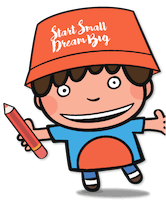Phase 4 : Different type of activity in different culture
Chopsticks play an important role in Chinese food culture. Chopsticks are called “Kuaizi” in Chinese. They were called “Zhu” in ancient times. In this activity, children were given a pair of chopsticks each to pick up different colour of blocks and sort them according to colours. Look at how the children persevered to pick the blocks up.
There are 5 popular traditional games in Malay culture and one of them is “Congkak”. It is a Mancala game of Malay origin played in Malaysia and the word “Congkak” was believed to be originated from the old malay ‘congak’ which gives a meaning as mental calculation that was practiced in this game. Children were taught to count the number of stones and fill up the holes till their big ‘home’ and count who has the most number of stones in their ‘home’.
Look at how they are helping each other in the game.
One of the activity which can allow children to practice their balancing skills is through this game. Theemithi (also spelt Thimithi), or” firewalking”, is a Hindu religious practice where devotees walk across a fire pit in exchange for a wish or blessing granted by the goddess Draupadi. Teachers created a various shape of firepit and let children choose to walk and balance on it.
Patintero, also known as harangang-taga or tubigan, is a traditional Filipino children’s game. Along with tumbang preso, it is one of the most popular outdoor games played by children in the Philippines. Children in the box, whom are called as ‘patoto’ or tapper in English, were taught to guard their box and tap the other party from passing through to the other side of the box.
Children enjoyed themselves playing with different type of games. They acquired alot of knowledge today.
































